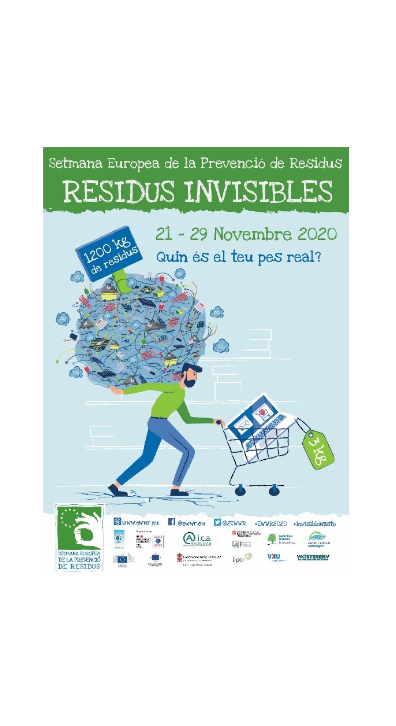- From November 21 to 29, awareness-raising actions on waste prevention are organized throughout Europe
- The focus of this year's edition is the "invisible" waste, in order to know and be aware of the backpack of waste the products produce
- Most of the activities will be virtual and the Catalan portal of virtual resources of the Week is presented as an innovation in Catalonia

Despite the pandemic situation, 260 entities from Catalonia participate this year, including public administrations, associations, companies, educational institutions, other institutions and private citizens. Most of the proposed actions are virtual, from competitions and challenges to online sessions or seminars, "digital cleaning" and some small face-to-face events, repair and zero waste workshops at home. All activities can be consulted by demarcation, municipalities, type of activity, name of the organizing entity, type of entity, public to whom they are addressed to the agenda of activities of the Week.
"Invisible" Waste
Each edition of the Week emphasizes a specific topic. This year it is the year of "invisible" waste, in reference to the large amount of waste generated during the manufacturing process of the products. A large part of this waste cannot be recycled and ends up in landfills and incinerators. Together with the footprint they generate on the environment, they also produce CO 2 emissions and represent a very high cost to the climate. For sustainable production and consumption, products must have a longer shelf life, should be easier to repair and recycle and, ultimately, not be toxic when recycled. The increase in the useful life of the product reduces the need for new production and, therefore, the amount of waste generated in the manufacturing process.